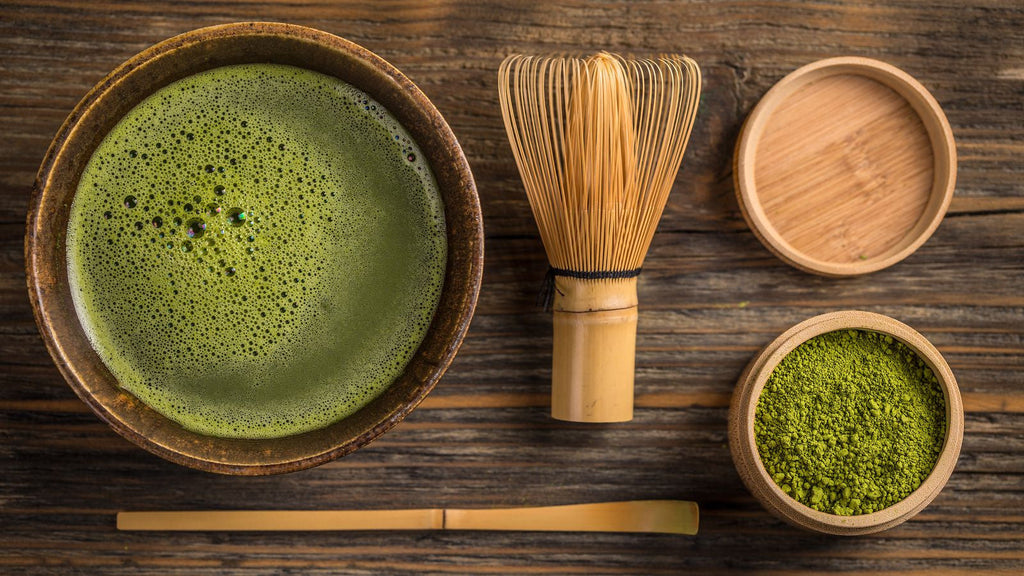Matcha vs. Coffee: Why Wholesale Matcha is Winning in Australia

In Australian cafés, a quiet revolution is underway. Coffee has long reigned supreme, but matcha is now making a serious impact. As wholesale matcha shipments grow in volume, more coffee drinkers are swapping their flat whites for vibrant green lattes.
What’s driving this shift, and is matcha poised to overtake coffee in Australian café culture? Let’s take a closer look.
The Rise of Matcha
Until recently, matcha was a niche offering — a curiosity for tea lovers or fans of Japanese cuisine that was rarely stocked or ordered. Today, it’s dominating menus with a range of flavour options and is enjoyed hot or iced just like coffee. According to ABC News, a café in Sydney now sells more matcha drinks than coffee, with matcha comprising over half of drink sales.
Social media has played a large role in the explosion of this trend. TikTok and Instagram are swamped with vivid matcha recipes, latte art challenges, and smoothie bowls. This has exposed matcha to a wide audience, especially younger consumers seeking visually appealing and health-forward alternatives to coffee. If they can share it on Instagram — even better — they’ll hopefully tag your café too, so it’s a marketing win to follow trends like these.
As matcha’s popularity rises, wholesale demand has exploded. Some Australian importers report their matcha sales have tripled in the past year. Wholesale matcha is becoming a key product for cafés looking to diversify and capture new markets, so it’s regularly re-ordered.
What Does Matcha Offer That Coffee Doesn’t?
There are several factors making matcha compelling for café owners and drinkers alike:
- A Different Caffeine Experience: Matcha contains caffeine along with naturally occurring amino acids, which many people find provide a smooth and balanced energy experience. Many consumers see matcha as a smoother, more sustained energy boost.
- Health Benefits: As a powdered green tea, matcha is rich in antioxidants and chlorophyll. Health-conscious consumers often choose matcha over coffee for the perceived benefits of these ingredients and to reduce acidic drinks.
- Visual Appeal: Matcha’s vivid green hue is highly photogenic, fitting perfectly into the ‘Instagrammable’ café aesthetic.
- Premium Pricing: For cafés, matcha serves as a point of differentiation in a crowded coffee market, and many matcha drinks can command higher markups than standard coffees, making the wholesale margin more attractive.
- Diversity and Novelty: Some customers may prefer lighter caffeine, plant-based milks, or just non-coffee options for a change in their routine. Matcha provides an alternative without completely abandoning their caffeinated beverage habits.
Why Wholesale Matcha is Growing
Given matcha’s benefits, wholesale suppliers and cafés both want to get into the trend. There are practical reasons why this is working:
- Growing Suppliers: To address supply risk, matcha wholesalers are expanding their producer base in Japan and beyond. Australian suppliers are working with more growers to ensure larger volumes.
- Early Adoption by Cafés: Larger café groups and chains are increasingly adding matcha to their standard beverage suite, pushing wholesale demand. The push from larger buyers helps justify larger matcha imports and more stable inventory.
- Higher Margins: Though raw matcha is expensive, reasonably priced matcha lattes can carry robust profit margins. In a saturated coffee market, matcha offers a fresh revenue stream.
- Complements Coffee, Not Replaces It: For many cafés, matcha doesn’t remove coffee but works alongside it. Some customers who prefer matcha may not have otherwise ordered a coffee. The existence of both increases total beverage spend — customers get variety, and cafés see improved profits.
Challenges to Be Aware Of
The matcha surge isn’t without its risks. In fact, the very forces propelling matcha’s rise are squeezing the supply chain.
- Global Shortage and Record Prices: Matcha is currently experiencing a shortage. Rising demand, limited harvests, and logistical bottlenecks have pushed supplies to record prices. Major Japanese producers have announced steep price increases or limited their direct sales, which is why Australian manufacturers are widening their source network.
- Import Difficulties: Australian cafés are already feeling the pinch. Some suppliers have had to ration matcha, limit online sales to small volumes per customer, or manage long delays.
- Substitution: In some instances, producers have blended ceremonial or premium matcha grades into latte blends just to maintain supply. While practical, this blurs the distinctions between grades and risks disappointing purist clients.
Is Coffee or Matcha Going to Win?
Coffee has long been the centre of Australian café culture — it’s going nowhere. But the rise of matcha isn’t a fleeting trend. With a unique taste, visual appeal, and strong wholesale growth, matcha is carving a path for itself in cafés across Australia, and it doesn’t seem to be slowing down any time soon — as long as supplies keep up.
At Teavision, we supply quality matcha that your café customers will love. Our best prices are available to our wholesale customers, so why not open an account today?
- Lucas Ruzicka
Comments 0